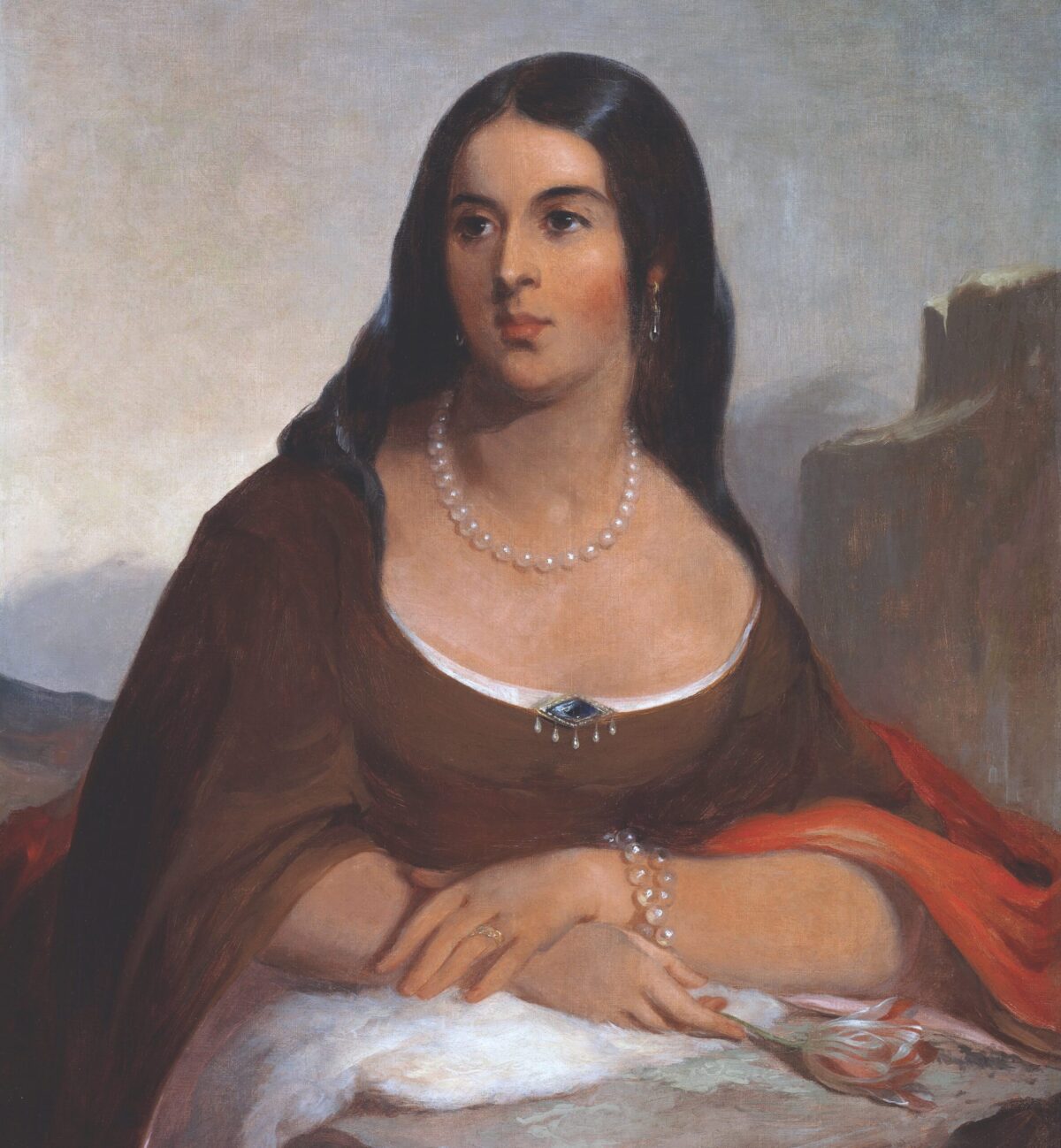Pocahontas, born Matoaka, was the daughter of a Powhatan Indian chief and was born around the year 1595 in Werowocomoco, Virginia (what settlers later renamed Jamestown). When English colonists settled in Jamestown in 1607, Pocahontas befriended them. She played with some of the children of the colonists and the parents grew fond of her as well. Overall, the situation between the Powhatans and the newly arrived colonists was tenuous.
Tensions continued to grow overtime between the two groups. In 1608, Captain John Smith, the leader of the colony, was captured by Powhatan’s men. Smith claims that Pocahontas pleaded for them to spare Smith’s life and Powhatans released him, and that by doing so, she saved the colony of Jamestown. Despite this supposed salvation of Smith, relations between other Englishmen and the Native Americans remained volatile.
In 1613, Pocahontas was taken hostage by English ship captain Samuel Argall. Argall wished to exchange Pocahontas for several Englishmen who were being held by the Powhatans for numerous supplies, including tools, that the Native Americans had stolen from them. Pocahontas was taken to Jamestown, where the governor, Sir Thomas Dale, impressed by her manners and her intelligence. She was then instructed in Christianity, baptized, and given the Christian name Rebecca.
One of the colonists, John Rolfe, became enamored with Pocahontas and asked Sir Thomas Dale if he could marry her. Dale agreed, as did her father, and the two were married. The marriage between the two helped bring a period of peace between the colonists and the Natives. In 1616, Pocahontas was invited to England, where she met the King and Queen. She settled in England with Rolfe until her death the next year.
Death
In early March 1617, Pocahontas fell ill while sailing back to Virginia with her husband. She died at around the age of 21 due to respiratory failure. She was survived by her husband and son Tom Rolfe. The exact illness remains unknown, though it was likely pneumonia.
On March 21, she was buried at St. George’s Church, in Gravesend, England, where a life-sized bronze statue stands in her memory.
The John Smith Story:
The most popular story about Pocahontas is one shrouded in mostly mystery and fiction. In 1607, Smith and 100 settlers settled around the James River. As tensions between the colonists and Powhatans rose, around December that year, John Smith was captured and sent to the Powhatan chief. In his original written account of the encounter, Smith describes speaking with Chief Powhatan but makes no mention of Pocahantas, whom he would meet months later.
In 1616, after Pocahantas was scheduled to arrive to England, Smith wrote to the queen and in his new account mentions the capture adding new details in which he revealed a pending execution by the Powhatans and a young girl who threw herself into the conflict to save him right before he was to be killed. He repeated this account in his book, Generall Historie of Virginia New-England, and the Summer Isles, published in 1624, years after Pocahontas’ death. Due to the constantly changing nature of Smith’s own account, and his then rocky relationship with the London Company years after returning to England, many historians have disputed the validity of these events, with some claiming Smith had hoped to bolster his own reputation with such bold claims. (Pocahontas herself would have only been around 12 at the time.)
After Death:
Much of Pocahontas’ life has been romanticized in media, in many books, films, and artwork—much of it fictionanlized and largely revolving around her relationship with Smith and her life in England. Several cities are named after her. Though popular in mainstream American culture, she is a less popular figure among Native populations.

